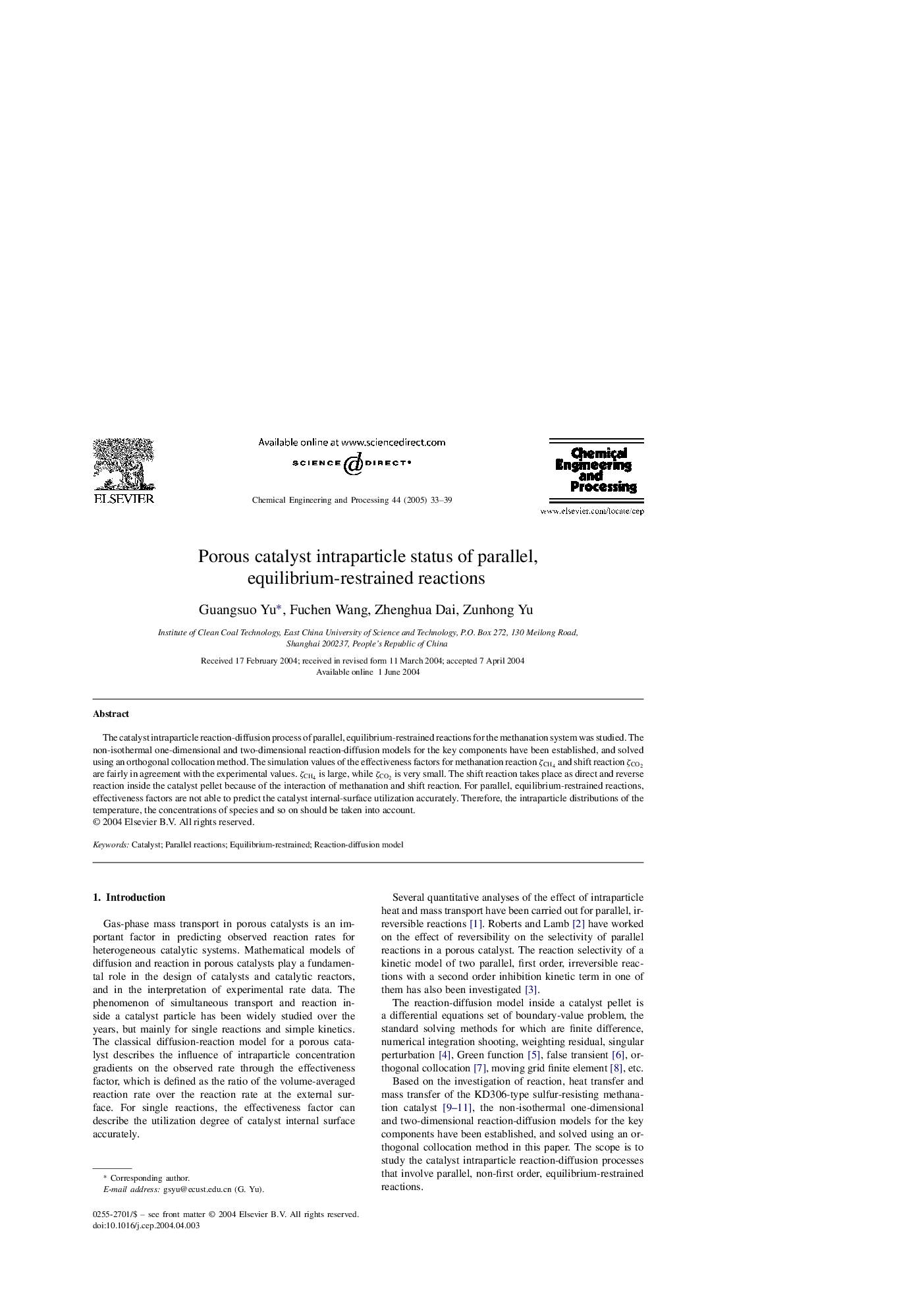| Article ID | Journal | Published Year | Pages | File Type |
|---|---|---|---|---|
| 10396970 | Chemical Engineering and Processing: Process Intensification | 2005 | 7 Pages |
Abstract
The catalyst intraparticle reaction-diffusion process of parallel, equilibrium-restrained reactions for the methanation system was studied. The non-isothermal one-dimensional and two-dimensional reaction-diffusion models for the key components have been established, and solved using an orthogonal collocation method. The simulation values of the effectiveness factors for methanation reaction ζCH4 and shift reaction ζCO2 are fairly in agreement with the experimental values. ζCH4 is large, while ζCO2 is very small. The shift reaction takes place as direct and reverse reaction inside the catalyst pellet because of the interaction of methanation and shift reaction. For parallel, equilibrium-restrained reactions, effectiveness factors are not able to predict the catalyst internal-surface utilization accurately. Therefore, the intraparticle distributions of the temperature, the concentrations of species and so on should be taken into account.
Related Topics
Physical Sciences and Engineering
Chemical Engineering
Process Chemistry and Technology
Authors
Guangsuo Yu, Fuchen Wang, Zhenghua Dai, Zunhong Yu,
